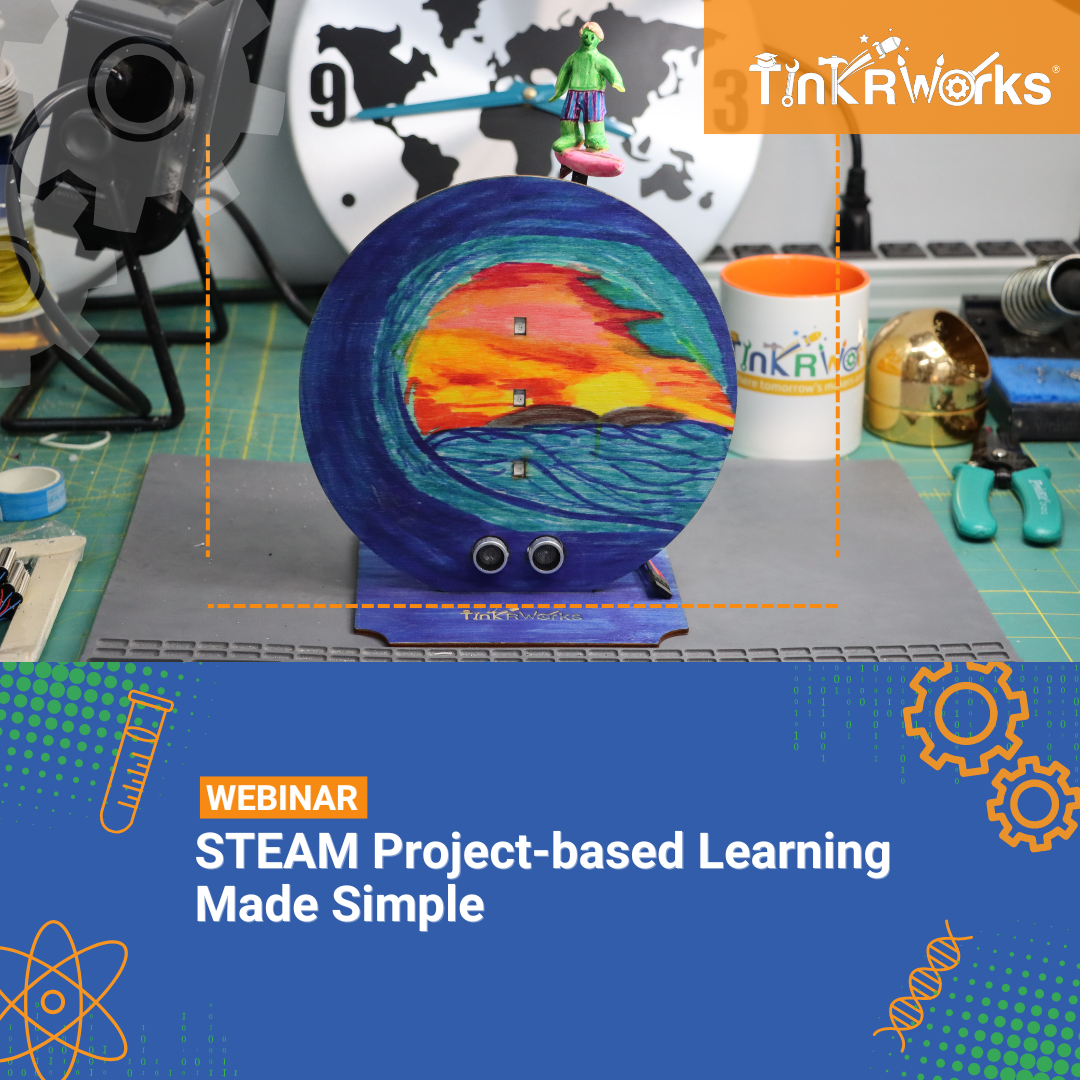Lesson Sampler
STEAM Project-based Learning Made Simple
What is Project-based Learning (PBL), and how is it transforming K-8 STEAM education? Join us as we delve into the case for STEAM Project-based Learning (PBL). Learn about the transformative potential of PBL through real-world applications in the STEM classroom.
Featured Speakers:
- Peter Cipkowski, Ed.D., delves into the research behind Project-based Learning (PBL) and its effect on science achievement and social/emotional learning
- Brian Sorich, Product Development Manager, walks through an Art Electric demo
- Matt Yena, TinkRworks School Partner, shares his experience teaching TinkRworks' projects in his middle school classroom
Recorded 4/16/2024

Watch Webinar
TinkRsynth Lesson Sampler
Grades 6-8
Only TinkRworks provides all of the essential ingredients to ensure successful STEM/STEAM implementation — including innovative curriculum, hands-on project kits, a user-friendly coding environment, and professional development.
Check out the TinkRsynth Lesson Sampler for preview of our STEAM curriculum (Grades 6-8).
Contents
- TinkRworks Curriculum Overview
- Curriculum Map
- Instructional Slides
- Programming Challenges
- Activity Guide
- Student Assessments
/Landing%20Page%20Assets/Project%20Lesson%20Samplers/TinkRsynth%20Sampler.png?width=810&height=810&name=TinkRsynth%20Sampler.png)
Peter Cipkowski, Ed.D., delves into the research behind Project-based Learning (PBL) and its effect on science achievement and social/emotional learning
Brian Sorich, Product Development Manager, walks
through an Art Electric demo
Matt Yena, TinkRworks School Partner, shares his experience teaching TinkRworks' projects in his middle school classroom
Download Sampler
Featured Project
TinkRsynth | Grades 6-8
Discover the fundamentals of coding through music. Students create a sound mixing board to produce, manipulate and synthesize sounds. They do this by programming the board to combine various electrical waves together to create sound for their unique instruments. Along the way, they explore the properties and physics of sound waves and use their instrument to learn about rhythm, chords, melodies, and to compose music. Students show off what they’ve learned by orchestrating a solo performance or forming an ensemble with classmates!